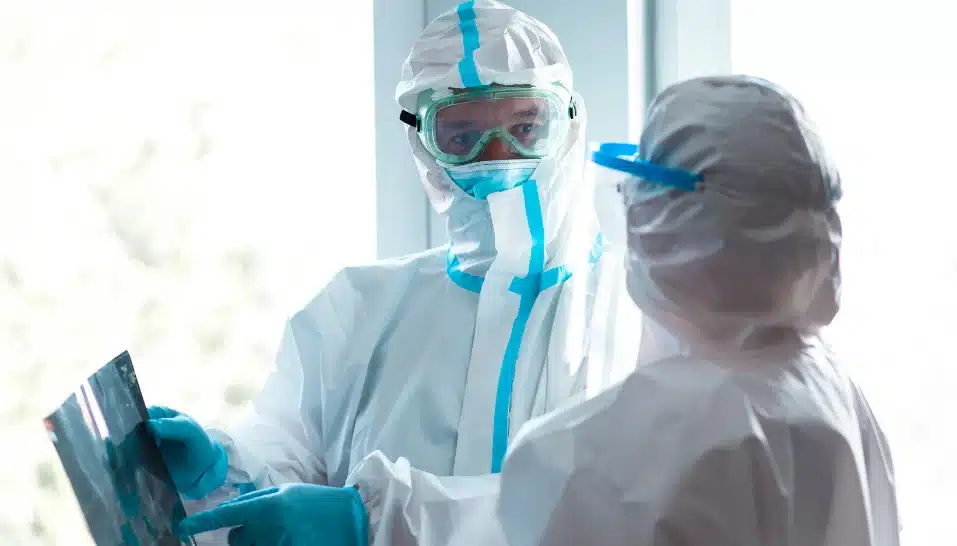The government, the scientists and the community came together to drive down the second wave. From its peak of 6767 active cases on August 7 to 4 cases on November 11, the Australian state of Victoria has some important lessons in pandemic management to teach the world.
By Shibu Thomas
As the United Kingdom and many parts of Europe head into lockdowns to contain the second wave of COVID-19 infections, in another part of the world Melbourne emerged from three-months of lockdown with a dozen consecutive days of zero cases. Terming its strategy ‘aggressive suppression’, the Australian state of Victoria is now being held up as an example to show that the second wave can be defeated.
From its peak of 6767 active cases on August 7 to 4 cases on November 11, much of the second wave infections for Victoria, with a population of around 6.39 million, has centred around the capital city of Melbourne and its suburbs. In early August, the state was reporting around 700 cases daily. Professor Micahel Tool, an epidemiologist at the Burnet Institute, writing for The Conversation said that of the handful of places to successfully tackle the second wave, Victoria was comparable to Vietnam and Hong Kong in quashing the infection for the second time.
Looking back
Daily New Cases in Victoria
Australia has recorded around 27,683 cases and 907 deaths since the start of the epidemic. The first cases were reported in Victoria in January, mainly among overseas returned travellers. At the peak of the first wave, when daily new cases touched 106 on March 27, most of the cases were overseas travellers. Lockdown measures were relaxed in early June as cases declined across Australia.
In Victoria, the second wave started innocuously in June with a handful of cases of community transmission. Genomic sequencing showed that many of the cases in the second wave were related to the state’s botched hotel quarantine programme for overseas returned travellers.
In July, around 12 postcodes in Melbourne were placed under stage 3 restrictions. Several high-rise public housing estates were locked down and the residents placed in mandatory quarantine before the entire Melbourne metropolitan area was placed in stage 3 lockdown and mask-wearing was made compulsory.
A study by researchers at the Burnet Institute, published in The Medical Journal of Australia, found that the lockdown measures introduced in July averted between 9,000 – 37,000 cases in Victoria in that one month alone. The measures that were originally supposed to be in place for six weeks included the closure of pubs, bars and places of worship. Restaurants and cafes were restricted to take-away only and public gatherings were limited to two people.
“The stage three control measures were effective in significantly reducing the level of disease transmission. The effective reproductive ratio fell considerably in July from 1.75 to 1.16,” said Professor Margaret Hellard, who was part of the Burnet Institute team that conducted the study.
The study concluded that the measures were still not impactful enough, with a further 14 per cent reduction needed “to achieve a genuine flattening of the curve”. This reflected in the numbers with cases peaking at a five-day average of around 500 daily cases between July 29 and August 5.
In August, Melbourne entered into stage 4 lockdown with stringent measures. Retail shops, schools and most workplaces were closed, 8 pm-5 am daily curfew was introduced along with a five-kilometre travel bubble, restrictions on outdoor exercise, and mandatory masks in the entire state.
Zero new cases
Active cases in Victoria
A study by the University of Melbourne, published in the Medical Journal of Australia (MJA), found that if Melbourne had gone into full stage 4 lockdown with the mandatory wearing of masks from July 9, even without measures like the night curfew, it could have achieved elimination in six weeks. Instead, the first day of zero new cases had to wait till end-October. By the end of the second wave, Victoria had seen 20,345 cases and 819 deaths, a majority of them in aged-care.
“There is increasing evidence on the effectiveness of social distancing and masks in reducing community transmission,” said Professor Hellard. “You need to have really strong systems of contact tracing and testing. You need to make sure the community is aware, to get tested early, and then be able to stay at home and isolate if there’s a risk of infection or one has the infection.”
Victoria’s chief health officer Brett Sutton, who led the state’s response to the pandemic, points out that stage 4 restrictions were not the science, but the “tool” that was used to drive down infections. He also credits other measures, such as reducing the turnaround time for testing, overhauling the contact tracing and outbreak management. Admittedly, when the second wave started, Victoria’s health system was overwhelmed, but it now relies on a state-of-the-art IT system for its contact tracing and disease management.
It required the government, scientists and the community to come together to drive down the second wave. The government managed to get a buy-in from the community by reporting the infections and measures to control it in a transparent manner. Victorian Premier Daniel Andrews fronted the cameras, in nationally televised press conferences, daily for 120 consecutive days, along with his health officers. He started and ended the press conferences with the same message: “Get tested!” Despite calls from the opposition for relaxing the lockdown as case numbers went down, Andrews, who was called by some as ‘Dictator Dan’, said he would stay the course unless advised otherwise by his public health team.
Professor Hellard maintains that none of the measures could have had an impact without one crucial element – community engagement. “You need community cooperation and community engagement. I think that’s where mostly around the world we’re still not doing enough – recognising that behaviour change and community engagement is the key to how we manage this infection globally,” she noted.

















